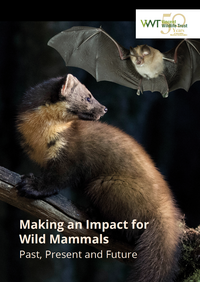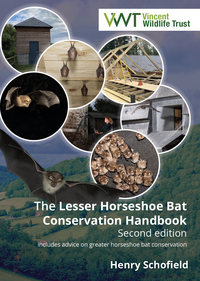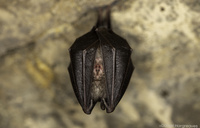
Making and Impact for Wild Mammals — Past, Present and Future
VWT is celebrating 50 Years of making an impact for threatened mammals in Britain, Ireland and mainland Europe while looking ahead to the future challenges and opportunities.
Staff at Vincent Wildlife Trust have produced a range of free, downloadable resources on the work to conserve threatened mammals in Britain, Ireland and mainland Europe. Some have written books that can be bought online through NHBS.

VWT is celebrating 50 Years of making an impact for threatened mammals in Britain, Ireland and mainland Europe while looking ahead to the future challenges and opportunities.

The first edition of The Lesser Horseshoe Bat Conservation Handbook was published in 2008 and has been widely used by ecological consultants and planning authorities in Britain and Ireland, as well as further afield in mainland Europe. The work of Vincent Wildlife Trust (VWT) on this species has continued and developed following the original publication, complemented by workshops and training courses delivered by the Trust to a wide range of stakeholders. The Trust has hosted teams working on horseshoe bat conservation projects from across Europe and has, in turn, visited these projects. This exchange of ideas, along with the extensive feedback received over the years, has led to the production of this second edition of the handbook.

Vincent Wildlife Trust has just published its Annual Report for 2024. This report gives an overview of the past year’s highlights, its projects, its partners and its audited financial statements.

The purpose of this audit is to identify the work needed to retain or enhance a summer roost and is considered under five headings or criteria laid out in five sections, all of which impact on the longevity and suitability of the structure for lesser horseshoe bats. There is a Table of Actions to capture the work considered necessary to enhance the roost and a blank area titled Supplementary Section at the end of the document where specific recommendations and suggestions can be entered — but these should be brief and precise. Photo: ©Daniel Hargreaves

The following guidance document describes how to construct a Vincent Wildlife Trust (VWT) pine marten den box. This guidance document, and the construction plans contained within it, is an update of previous VWT guidance and replaces and supercedes all previous material published by VWT relating to the construction of den boxes. References made by third parties to VWT guidance or specifications may not reflect this updated guidance, even if they are made after the date of this document.
The specifications, plans and other material in this document are for information only. VWT does not accept any liability or responsibility arising from reliance on this document. Use of materials and accessories other than those recommended may affect the performance, safety and durability of the den box.

The CJM bat box was designed to imitate niches where crevice dwelling bats might roost; such as a split in a tree trunk or behind loose bark. The three vertical ‘slots’ each of a different width, offers a choice that several species of bat, depending on their size, might use.